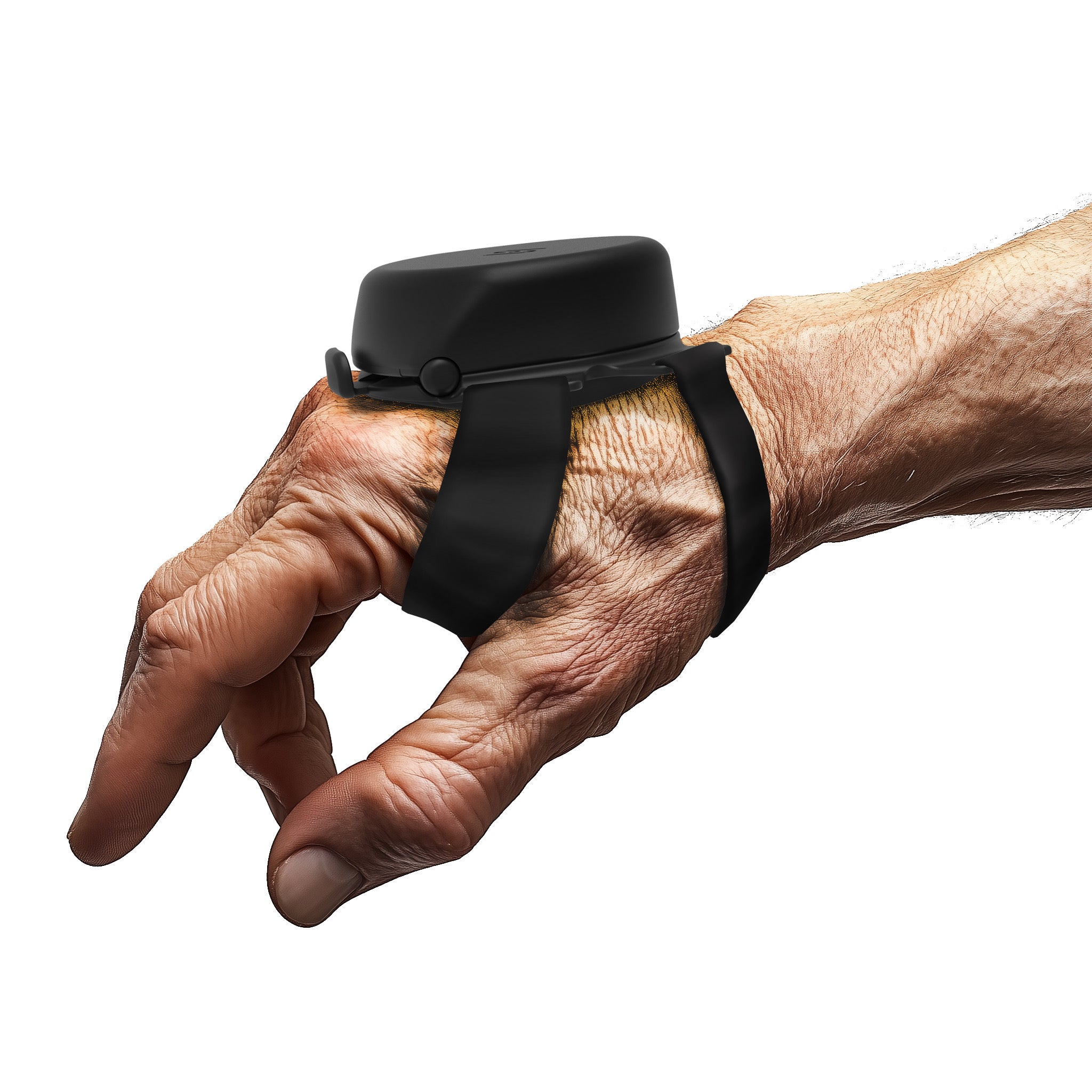Millions of people worldwide live with Essential Tremor (ET) — one of the most common movement disorders that causes uncontrollable shaking, often in the hands, head, or voice. For some, the tremor is mild. For others, it interferes with everyday activities like eating, writing, or even drinking from a glass. While medication can help many patients manage symptoms, some individuals don’t respond well to drug therapy. In those cases, DBS surgery for Essential Tremors—short for deep brain stimulation surgery for Essential Tremor—may be recommended as a next step.
According to the National Institute of Neurological Disorders and Stroke (NINDS), deep brain stimulation (DBS) has become a standard treatment for severe tremors that don’t respond to medication. The procedure involves implanting electrodes in specific brain areas to regulate abnormal activity. DBS doesn’t cure Essential Tremor, but it can significantly improve quality of life by helping patients regain better control and independence in their daily routines.

What Is Deep Brain Stimulation (DBS)?
Deep brain stimulation is a neurosurgical treatment designed to manage movement disorders such as Essential Tremor and Parkinson’s Disease. The procedure involves implanting thin electrodes into targeted regions of the brain — typically the thalamus, which is responsible for coordinating voluntary movements. These electrodes are connected to a pulse generator implanted under the skin near the chest.
Once activated, the system delivers continuous electrical impulses that modify irregular brain signals responsible for tremor. This process is adjustable, reversible, and non-destructive — unlike older surgical techniques that permanently destroyed small areas of brain tissue.
Key components of a DBS system include:
|
Component |
Function |
|
Electrodes |
Implanted in the thalamus to deliver stimulation |
|
Extension Wires |
Connect electrodes to the implanted pulse generator |
|
Implantable Pulse Generator (IPG) |
A battery-powered device that generates electrical pulses |
The deep-brain stimulation surgery for essential tremor is highly customizable. Physicians can adjust voltage, pulse width, and frequency through wireless programming to optimize tremor control while minimizing side effects (Mayo Clinic).
How DBS Surgery Works
The DBS procedure is performed by a neurosurgeon with expertise in movement disorders. It typically occurs in two stages: electrode implantation and pulse generator placement.
-
Pre-surgical Assessment:
Patients undergo detailed imaging (MRI, CT scans) to identify precise brain targets. Neurological evaluations confirm whether tremor symptoms are medication-resistant. -
Electrode Implantation:
During surgery, electrodes are inserted into the thalamus. The patient may remain awake under local anaesthesia so surgeons can test tremor response to stimulation. -
Pulse Generator Placement:
A small implantable device—similar to a pacemaker—is positioned under the skin near the chest or collarbone. Wires connect the generator to the brain electrodes. -
Programming & Activation:
After recovery, clinicians program the device to deliver the most effective stimulation parameters. Settings are adjusted over time to maintain optimal results.
Most patients stay in the hospital for a few days after the operation. Recovery usually takes several weeks, with gradual return to normal activities. Battery replacement is needed every three to five years, depending on device type and usage.
Who Should Consider DBS Surgery for Essential Tremor
DBS is not the first-line treatment for Essential Tremor—it is typically recommended when medications fail to provide sufficient relief or cause intolerable side effects. According to the Parkinson’s Foundation, ideal candidates generally meet the following criteria:
-
Diagnosis of Essential Tremor confirmed by a neurologist.
-
Significant tremor that affects daily life or work.
-
Poor response or intolerance to first-line medications such as propranolol or primidone.
-
Reasonable overall health and ability to undergo surgery.
-
Realistic expectations—understanding that DBS controls tremor but does not cure it.
Age alone is not a strict limitation; many older adults have successfully undergone DBS surgery for Essential Tremors when deemed medically fit. A multi-disciplinary team—comprising neurologists, neurosurgeons, and neuropsychologists—will assess each patient’s suitability.
Effectiveness of Deep Brain Stimulation for Essential Tremor

Research consistently shows that deep brain stimulation for Essential Tremor can reduce tremor amplitude by up to 70–90% in properly selected patients (National Tremor Foundation, 2024). The benefits often appear immediately after activation, though fine-tuning of stimulation parameters may take weeks or months.
Clinical advantages include:
-
Improved hand coordination and ability to perform daily activities.
-
Better control of head and voice tremors.
-
Adjustable stimulation intensity to accommodate disease progression.
-
Reversible treatment—stimulation can be turned off or modified anytime.
Some patients notice side effects such as temporary tingling, mild speech changes, or balance issues, especially when settings are newly adjusted. These effects usually resolve after reprogramming.
Risks and Considerations
While DBS is generally safe and effective, it remains an invasive neurosurgical procedure. According to the Cleveland Clinic, the primary surgical risks include:
-
Infection or bleeding at the implant site
-
Temporary confusion or headache
-
Hardware malfunction or lead migration
-
Anaesthetic complications (rare)
Long-term device maintenance is also important. Battery depletion or hardware wear may require replacement surgery. Despite these considerations, most patients report improved quality of life and minimal regret after DBS implantation.
Important note: DBS is a management tool, not a cure. The underlying neurological condition—Essential Tremor—remains, but symptoms become more controllable.
Life After DBS: Recovery, Adjustments, and Daily Living
Post-operative recovery focuses on wound healing and gradual resumption of activities. During follow-up visits, clinicians fine-tune stimulation settings to balance tremor control and comfort.
Typical recovery timeline:
|
Timeframe |
Milestones |
|
1–2 weeks |
Wound healing, light activity only |
|
3–6 weeks |
Device activation and programming |
|
2–3 months |
Stabilization of tremor control |
|
6+ months |
Regular follow-up for adjustments |
Patients should also follow safety guidelines regarding electronic devices, airport metal detectors, and MRI scans, as these may interfere with DBS hardware. Most systems are MRI-conditional, meaning they can be scanned under specific settings when supervised by a medical professional.
Comparing DBS With Other Tremor Management Options
|
Treatment Option |
How It Works |
Invasiveness |
Suitable For |
Notes |
|
Medication |
Alters brain chemistry to reduce tremor |
Non-invasive |
Mild to moderate tremors |
Common first-line therapy |
|
Focused Ultrasound |
Destroys targeted brain tissue using sound waves |
Minimally invasive |
Patients ineligible for DBS |
Irreversible |
|
Deep Brain Stimulation (DBS) |
Modulates brain activity via electrical impulses |
Invasive |
Severe, medication-resistant tremors |
Adjustable and reversible |
|
Tremor-Assist Devices |
External stabilization (e.g., wearable technologies) |
Non-invasive |
Mild to moderate tremors |
Complements medical therapy |
Integrating Steadiwear: Innovation in Tremor Management
While deep brain stimulation can offer significant relief for severe tremor, not every patient is a candidate for surgery. For individuals seeking a non-invasive alternative or supplementary option, Steadiwear provides an innovative solution through the Steadi-3, a Class I medical device designed to stabilize hand tremors naturally—without batteries, recharging, or surgery.
How Steadi-3 Helps
The Steadi-3 glove uses smart mechanical engineering to counteract tremor motion through adaptive damping technology. It’s specifically designed for people with Essential Tremor or Parkinson’s Disease, providing added control during tasks like eating, writing, or drinking.
Key benefits include:
-
Non-invasive, wearable tremor stabilization
-
Class I medical device registered in Canada and the U.S.
-
Lightweight, ergonomic design for daily comfort
-
Requires no charging or electronic components
-
Complements medical therapies like DBS or medication
For many individuals, combining DBS for more severe tremors with wearable devices such as Steadi-3 for day-to-day stability creates a comprehensive management approach—empowering patients to maintain greater control and independence.
Building Trust Through Professional Care
Before considering deep brain stimulation surgery for Essential Tremor, consultation with a qualified movement disorder specialist is crucial. They will assess medical history, imaging results, and treatment response to ensure suitability. Always discuss potential risks, expected outcomes, and post-surgical commitments before making a decision.
Healthcare professionals emphasize that patient education and realistic expectations are key to satisfaction with DBS outcomes. Reliable information from sources like the National Tremor Foundation, NINDS, and Parkinson Canada can help patients make informed choices.
Conclusion
Deep brain stimulation for Essential Tremor represents one of the most advanced and effective treatments for those struggling with severe tremors unresponsive to medication. It offers adjustable, reversible control that can dramatically improve hand function and daily independence. Though it’s not a cure, DBS can help individuals regain a sense of normalcy and confidence in everyday life.
For those seeking a non-surgical or complementary option, Steadiwear’s Steadi-3 provides a groundbreaking, non-invasive way to manage hand tremors. By combining modern medical innovation with engineering precision, it helps users achieve steadier hands—without batteries, charging, or invasive procedures.



